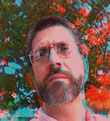|
|
 
|
|
Author
|
Topic: Facts about film
|
Ken Lackner
Phenomenal Film Handler

Posts: 1907
From: Atlanta, GA, USA
Registered: Sep 2001
|
 posted 06-30-2002 10:23 PM
posted 06-30-2002 10:23 PM




I'm starting to write a booth manual, and I want to make sure I don't write any incorrect facts. So, I have a few questions.When were motion pictures invented? When was the "cinema" introduced? 35mm has always been that standard guage for cinema, correct? What exactly is cellulose? Is it different from celluloid? Cellulose triacitate is the full name for acetate film stock, correct? I assume the term "cellulose" does not apply to polyestar film? How wide is the image area of 35mm film, and how tall is a full frame? Thanks for your help.
| IP: Logged
|
|
Jerry Chase
Phenomenal Film Handler

Posts: 1068
From: Margate, FL, USA
Registered: Nov 2000
|
 posted 06-30-2002 10:57 PM
posted 06-30-2002 10:57 PM




If you start out with when motion pictures were invented, you are bound to be wrong in some people's eyes. There were a number of contenders for the honor.Visit Marty Hart's site: http://www.widescreenmuseum.com For film sizes, visit: http://www.xs4all.nl/~wichm/filmsize.html The dictionary will provide chemical descriptions of cellulose, etc. The question in writing a small booth manual or employee manual is not "What do I include?" but "What should I leave out so as not to overwhelm the reader?"
| IP: Logged
|
|
|
|
Brad Miller
Administrator

Posts: 17775
From: Plano, TX (36.2 miles NW of Rockwall)
Registered: May 99
|
 posted 06-30-2002 11:48 PM
posted 06-30-2002 11:48 PM




Ken, I don't think you're doing this, but just in case...do your trainees a favor and don't devote more than 2 paragraphs to the history of motion pictures. By the time you get to the third paragraph, you need to be speaking about job duties. Remember *most* projectionists are just doing the job as a way to make money and are nowhere as interested as you are about things such as that. Try and concentrate on keeping the manual short enough that it is not intimidating and/or boring to read, otherwise your efforts will go out the door and your manual will just gather dust.Anyone who really gets into being a projectionist will look up those sort of things on their own. Perhaps the last page of your manual can have a list of good links to websites "for further reading".
| IP: Logged
|
|
|
|
|
|
Manny Knowles
"What are these things and WHY are they BLUE???"

Posts: 4247
From: Bloomington, IN, USA
Registered: Feb 2002
|
 posted 07-01-2002 11:37 AM
posted 07-01-2002 11:37 AM




One reason for my inclusion of certain historical data is so that they can get the feeling that this stuff is very basic and people were doing this stuff over a hundred years ago and that it hasn't changed much. The idea of that somehow provides a fair amount of relief.Usually, when we cover sound I will mention that movies used to be silent, just to see if that surprises anyone...Sometimes, it does! When we cover the differences between flat and scope, I mention that scope was Hollywood's reaction to television in the 1950s. I also take care to point out how the 1.85:1 flat aspect ratio works and how that can get a person into trouble if they aren't careful about framing. Note that historical data is designed to "leak out" during hands-on/demo sessions. We also have one or two customer service workshop sessions where we discuss the importance of good showmanship. The movie is not where the cinema makes its profits but it is the core product: Without the movie there would be no need for a concession stand. Our goal is to never be noticed by the customer. If somebody looks over their shoulder towards the booth, we fail at achieving that goal. In our customer service workshop session(s) we create lists of reasons why someone might look over their shoulder.
| IP: Logged
|
|
|
|
|
|
Frank Angel
Film God

Posts: 5305
From: Brooklyn NY USA
Registered: Dec 1999
|
 posted 07-02-2002 02:48 AM
posted 07-02-2002 02:48 AM





I will differ with Manny on this one. Yes, in the early 50's the exponentially growing TV penetration into the American home was a frightening prospect for the studios. Many will tell you that was what catapulted the studios to develop new technologies and launch the wide screen era (CinemaScope, VistaVision and soon after the wide gauge formats); but other critics believe, as I do, that the main driving force behind the development of wide screen technology was not so much TV as it was the unprecedented success of Cinerama. Cinerama was not born of Hollywood. Here was a company formed by Hollywood outsiders and yet they developed a system that was so spectacularly different and improved over standard 35mm film presentation that the public flocked to it in numbers that stunned the studio moguls. I am not sure about the exact numbers, but I recall reading that in the major cities where Cinerama theatres were in operation, they had 90% houses for every show for something like the first three years. The studios took one look at this and wanted to know why THEY weren't producing these wide, curved, images with 6/7 channel stereo sound. The impetus to develop wide screen presentation came from this monumental success of Cinerama. Obviously the by-product of such a demonstrative improvement in the visual and aural impact of motion pictures would be something that would once and for all overwhelm that 10 inch, low-resolution image accompanied by tinny, squawk box sound. TV simply could never compete with the new wide screen, stereo sound motion pictures. Cinerama was the primary driving force behind the studio moguls demand to their technical departments to "Get me wide screen!" This is why the industry referred to CinemaScope as "the poor-man's Cinerama," not "movies answer to TV." Although it used very different technology than Cinerama and didn't come close to being able to produce the crystal clear images or peripheral vision of Cinerama, CinemaScope mimicked it in other aspects. It used a curved screen (yes boys and girls, anamorphic prints were projected on curved screens for decades -- and happily it is finally making a slow return) and although it wasn't as wide as Cinerama, who's measuring -- it was wide enough and MUCH wider than what had been seen in the theatres up until then. CinemaScope had multi-channel sound (albeit not 6/7 channels, it was only 4 channels, but it was three-channel stereo with localized dialogue behind the screen and a surround sound behind the audience, just like Cinerama). It used magnetic tracks just like Cinerama, which provided sound reproduction leaps and bounds better than the old mono optical track. When THE ROBE opened in 1953, Daryl Zanuck knew he taken a giant leap in cinema technology -- he and the rest of Hollywood finally had their own piece of the Cinerama pie. When Budd Schulberg and Elia Kazan were pitching ON THE WATERFRONT, they met a distracted Zanuck --they were talking about their B&W, flat movie and all Zanuck could do was rave about CinemaScope, which he touted as a monumental success. When asked about his thoughts on ON THE WATERFRONT, he came right out and said he didn't like because it was being shot in B&W and flat, Zanuck was raving about Cinemascope, repeating over and over, how excited he was about the new process and likened it to the next evolutionary step from jumping "flickers" to smooth intermittent motion, to color to sound and finally to "this great new medium" as he called it, CinemaScope. Elia and Budd paused and then continued talking about their B&W film, only to hear Daryl ask then if they could imagine what Prince Valiant would look like in CinemaScope! The fact that CinemaScope blew TV out of the water didn't hurt either. Frank
| IP: Logged
|
|
|
|
|
|
All times are Central (GMT -6:00)
|
|
Powered by Infopop Corporation
UBB.classicTM
6.3.1.2
The Film-Tech Forums are designed for various members related to the cinema industry to express their opinions, viewpoints and testimonials on various products, services and events based upon speculation, personal knowledge and factual information through use, therefore all views represented here allow no liability upon the publishers of this web site and the owners of said views assume no liability for any ill will resulting from these postings. The posts made here are for educational as well as entertainment purposes and as such anyone viewing this portion of the website must accept these views as statements of the author of that opinion
and agrees to release the authors from any and all liability.
|

 Home
Home
 Products
Products
 Store
Store
 Forum
Forum
 Warehouse
Warehouse
 Contact Us
Contact Us




 Printer-friendly view of this topic
Printer-friendly view of this topic
















